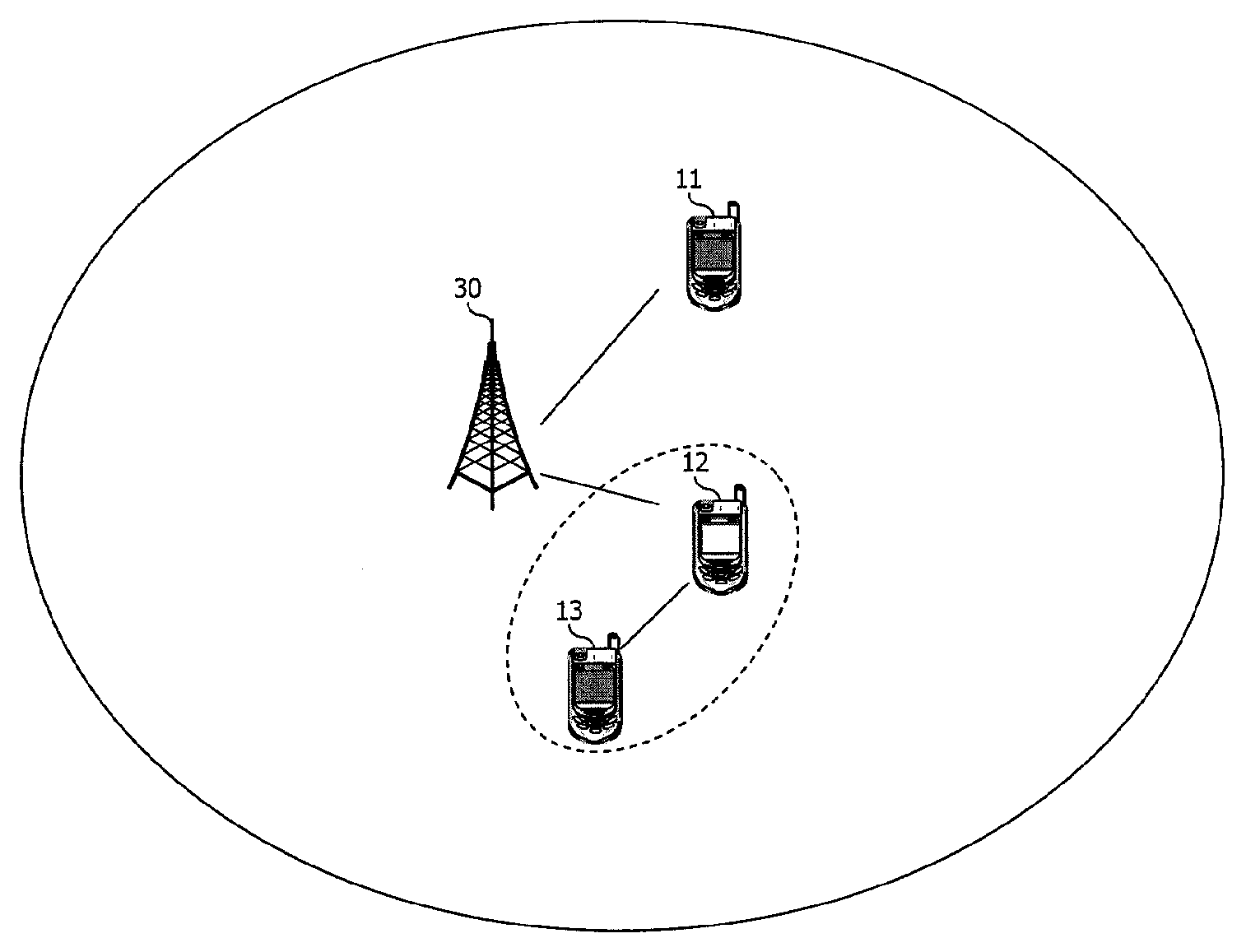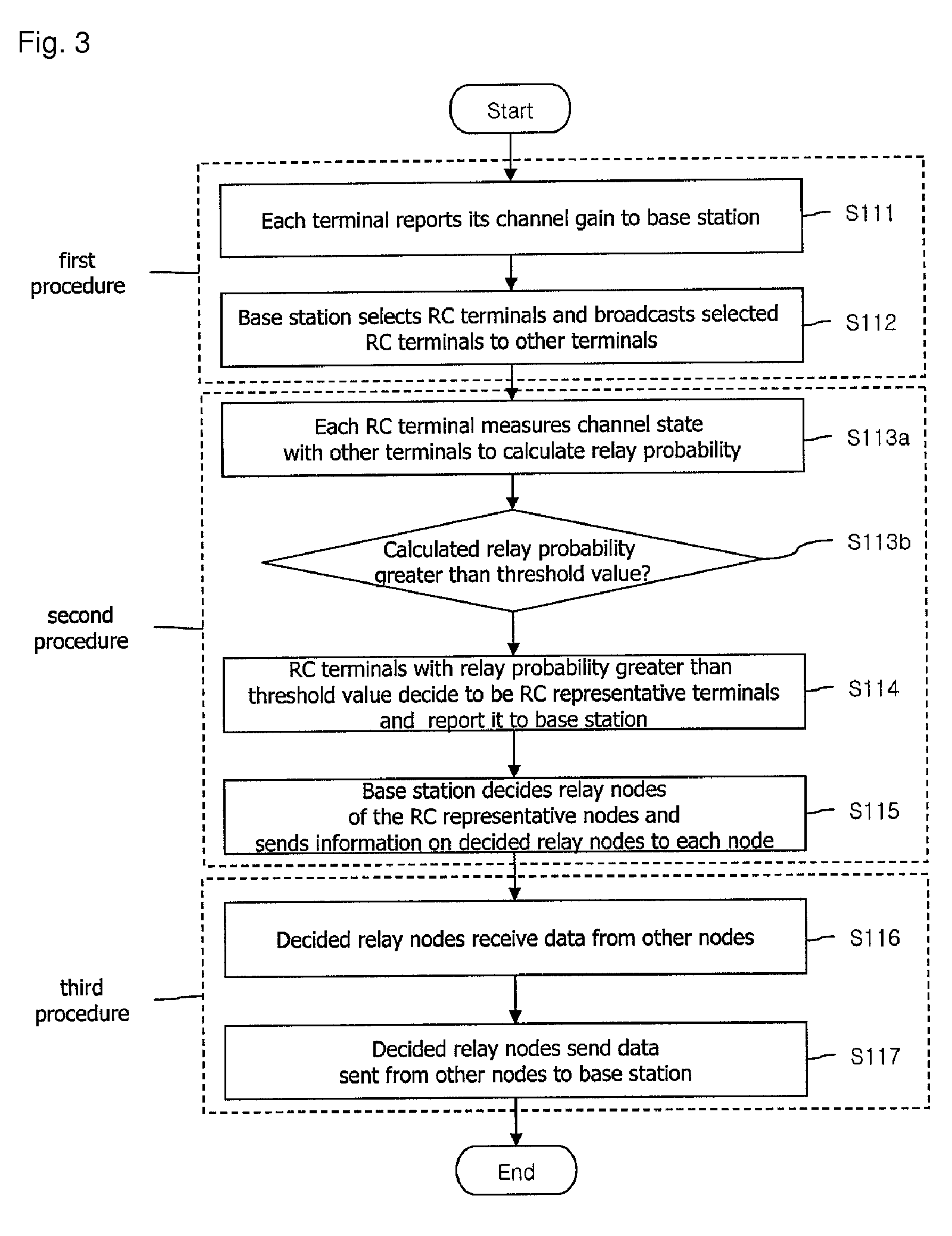Method for relaying data in multi-hop cellular system
a multi-hop cellular system and relaying technology, applied in the direction of transmission monitoring, repeater circuits, line-transmission details, etc., can solve the problems of blind routing, inability to employ a centralized architecture using the current wireless network architecture, and suffer from a huge load upon the calculation of fedback channel information, so as to reduce the complexity of signaling and calculation, reduce the probability of decoding uplink signals, and prevent the effect of lowering gains
- Summary
- Abstract
- Description
- Claims
- Application Information
AI Technical Summary
Benefits of technology
Problems solved by technology
Method used
Image
Examples
Embodiment Construction
[0037]The present invention may be applicable, with no limit to this, to any communication system, for example, 3rd generation partnership project (3GPP) long term evolution (LTE), IEEE standard, Ad-Hoc network and the like, to which the technical scope of the present invention is applicable.
[0038]Technical terms used in this specification are used to merely illustrate specific embodiments, and should be understood that they are not intended to limit the present invention. As far as not being defined differently, all terms used herein including technical or scientific terms may have the same meaning as those generally understood by an ordinary person skilled in the art to which the present invention belongs to, and should not be construed in an excessively comprehensive meaning or an excessively restricted meaning. In addition, if a technical term used in the description of the present invention is an erroneous term that fails to clearly express the idea of the present invention, it...
PUM
 Login to View More
Login to View More Abstract
Description
Claims
Application Information
 Login to View More
Login to View More - R&D
- Intellectual Property
- Life Sciences
- Materials
- Tech Scout
- Unparalleled Data Quality
- Higher Quality Content
- 60% Fewer Hallucinations
Browse by: Latest US Patents, China's latest patents, Technical Efficacy Thesaurus, Application Domain, Technology Topic, Popular Technical Reports.
© 2025 PatSnap. All rights reserved.Legal|Privacy policy|Modern Slavery Act Transparency Statement|Sitemap|About US| Contact US: help@patsnap.com



